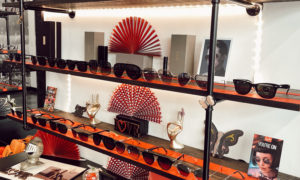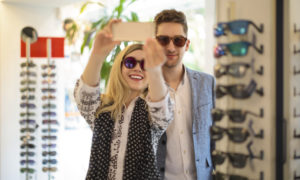By Peter Shaw-McMinn, OD
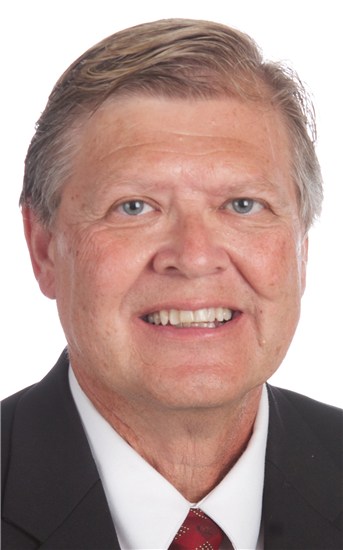
February 18, 2015
Sunglasses are a fashion statement, and many consumers know to wear sunglasses for comfort and protection from ultra-violet radiation during the summer. But what about when the temperature dips and the sun keeps shorter hours? It’s easy for patients to assume they don’t have to bother with sunglasses during the winter. As the eye health expert, it is your job as doctor to educate patients that this is far from the truth–that conditions during the winter can sometimes necessitate sunglasses at least as much as during the summer months, such as when the sun glares off of snow and ice.
Even in places where the temperature remains mild during the winter, there seems to be a misconception that sunglasses are not needed in the winter. My wife and I traveled to Maui, Hawaii; Barcelona, Spain; and Nice, France, to seek warm weather in December. I was amazed that, despite these regions being on the ocean, few people were wearing sunglasses. I see about the same small number of people wearing sunglasses in Southern California, where I live.
The following studies demonstrate the enormous need for the public to be educated about the importance of sunwear protection.
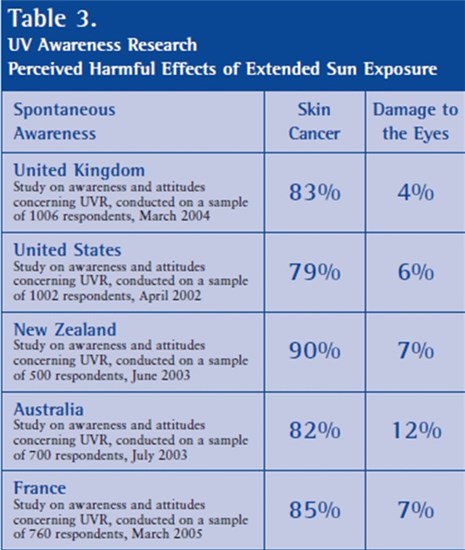
Source: Healthy Sight Counseling, Susan Stenson, MD
More recently, the Vision Council did a study showing improvement, but still a large percentage of Americans do not seem to know they must protect their eyes from the sun.
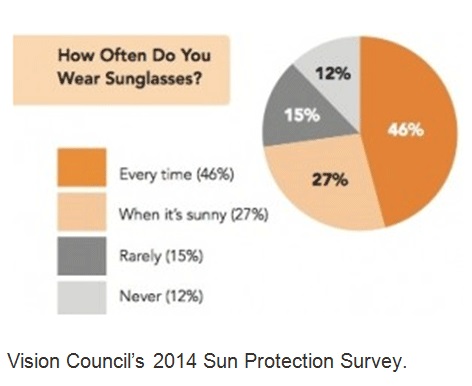
We, as eyecare professionals, must do a better job to educate our patients. We must remind our patients that, even in the winter, light rays can harm the eye and surrounding skin. Light reflects off wet surfaces and the snow. Protection from sunlight must occur year-round, not just during the summer months.
Albedo (Reflectivity) of Various Surfaces
Surface Percent Reflected
Fresh snow 80-90
Old snow 50-60
Sand (beach, desert) 20-40
Grass 5-25
Dry soil (plowed field) 15-25
Wet earth (plowed field) 10
Forest 3-10
Water (sun near horizon) 50-80
Water (sun near zenith) 5-10
Thick cloud 70-85
Thin cloud 25-30
Earth & atmosphere (overall total) 30
Source: NYU Polytechnic School of Engineering
One of the ways we can do this is to encourage gifts of sunglasses for babies. Baby Banz is just one of multiple companies that provide sunglasses, hats and other accessories to all ages of children. A doll with sunglasses strategically placed near the check-out counter, and a script for your staff to follow with every patient, could educate the public that protection from sunlight should start at an early age and continue throughout life. A few words on the intraocular lens during biomicroscopy can educate the patient about future cataract changes and present brunescence.
We owe it to our patients to alert them that UV protection is not present for light reflecting off the back of sun lenses. So often I see beach goers, sitting in a chair reading in the bright sunlight with the sun to their back, not realizing dangerous light rays are reflecting off the back of their lenses onto their eyes and surrounding tissues. They are under the assumption that their “100 percent UV” sun lenses are giving them adequate protection.
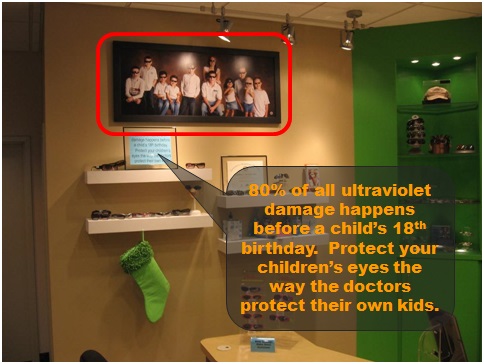 Let’s make a pact to educate all of our patients on the need for year-round eye protection from sun light. And give your staff tools to make it easy to convey the message.
Let’s make a pact to educate all of our patients on the need for year-round eye protection from sun light. And give your staff tools to make it easy to convey the message.
Photo courtesy of Mark Wright, OD, FCOVD, and Carole Burns, OD, FCOVD
Peter G. Shaw-McMinn, OD, is an assistant professor of Clinical Studies at the Southern California College of Optometry. He is the senior partner of Sun City Vision Center, a group practice including five optometrists. Dr. Shaw-McMinn has served as chairman of the AOA Practice Management Committee and the Association of Practice Management Educators. He was the appointed Benedict Professor in Practice Management for the University of Houston College of Optometry for 2001-2002. To contact: shawmc1@me.com.



